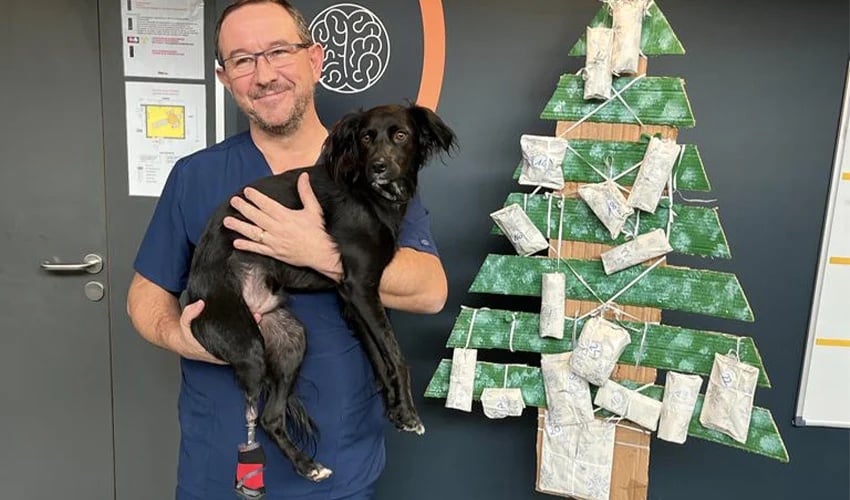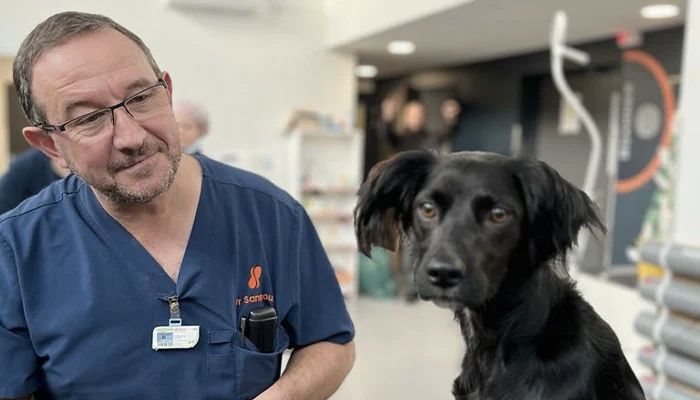3D Printed Titanium Prosthesis is Attached to Dog’s Bone, Allowing Him to Walk Again

Additive manufacturing has a number of applications in medicine, one of them being prostheses. The World Health Organization estimates that 30 million people worldwide need these devices, so manufacturing methods matter a great deal to a significant chunk of the population. Unlike conventionally produced ones, 3D-printed prostheses have the advantage that they can be customized to the patient. The 3D-printed ones are also relatively inexpensive to manufacture and can be produced locally. But it’s not just people who can benefit from 3D-printed prostheses: in veterinary medicine, it often happens that animals are dependent on prostheses. Often, the need for this is due to accidents; the example we are looking at today is a dog from France that received a 3D-printed prosthesis after a car accident.
The four-legged friend named Lucky had already experienced a tragic fate before the accident. As a puppy, the dog was left outside by his owners and taken in by the French animal welfare organization La Société Protectrice des Animaux (SPA). In September 2021, Lucky was finally adopted by a family. One day, a neighbor ran over the animal’s paw, forcing the dog to be admitted to the Sirius Clinic, a specialty clinic geared toward difficult surgeries. At first, the owners assumed that either a full amputation of the paw would have to be performed or attempts would be made to heal the wound in a lengthy yet costly manner. However, a doctor at the clinic suggested another option. This method involved grafting a 3D-printed prosthesis directly onto the dog’s bone.

Dr. Frédéric Sanspoux, the veterinarian in charge of Lucky (photo credit: Sirius Clinic)
The Treatment Process
The Sirius Clinic began the successful implantation of prostheses on amputated body parts in veterinary medicine as the first institution in France in 2020. Dr. Frédéric Sanspoux, veterinarian at the specialty clinic, explained the treatment procedure: “We start with a complete scan of the animal. We use the shape of the healthy limb as a guide to recreate the amputated leg in a kind of ‘mirror effect’.” He continued, “The goal is for the animal to regain the mobility it had before. Therefore, the prosthesis must be very well integrated into the bone. There is a phenomenon called ‘osseointegration,’ which means that the bone ‘colonizes’ part of the prosthesis so that it becomes part of the animal’s body.” The clinic works with various companies; Ennoïa, for example, is responsible for the computer model, while the prosthesis itself is manufactured by 3D Med Labs. With surgery costs of €4,000, this treatment was not the cheapest, but the sum was reimbursed by the owner’s insurance company.
Generally, there is a risk of severe inflammatory and infectious complications after such operations, but Lucky was spared from them, so that he can walk on the prostheses just four months later. Now the four-legged friend is one of the clinic’s mascots.
What do you think of Lucky’s 3D printed prosthesis? Let us know in a comment below or on our LinkedIn, Facebook, and Twitter pages! Don’t forget to sign up for our free weekly Newsletter here, the latest 3D printing news straight to your inbox! You can also find all our videos on our YouTube channel.
*Cover photo credit: Sirius Clinic






